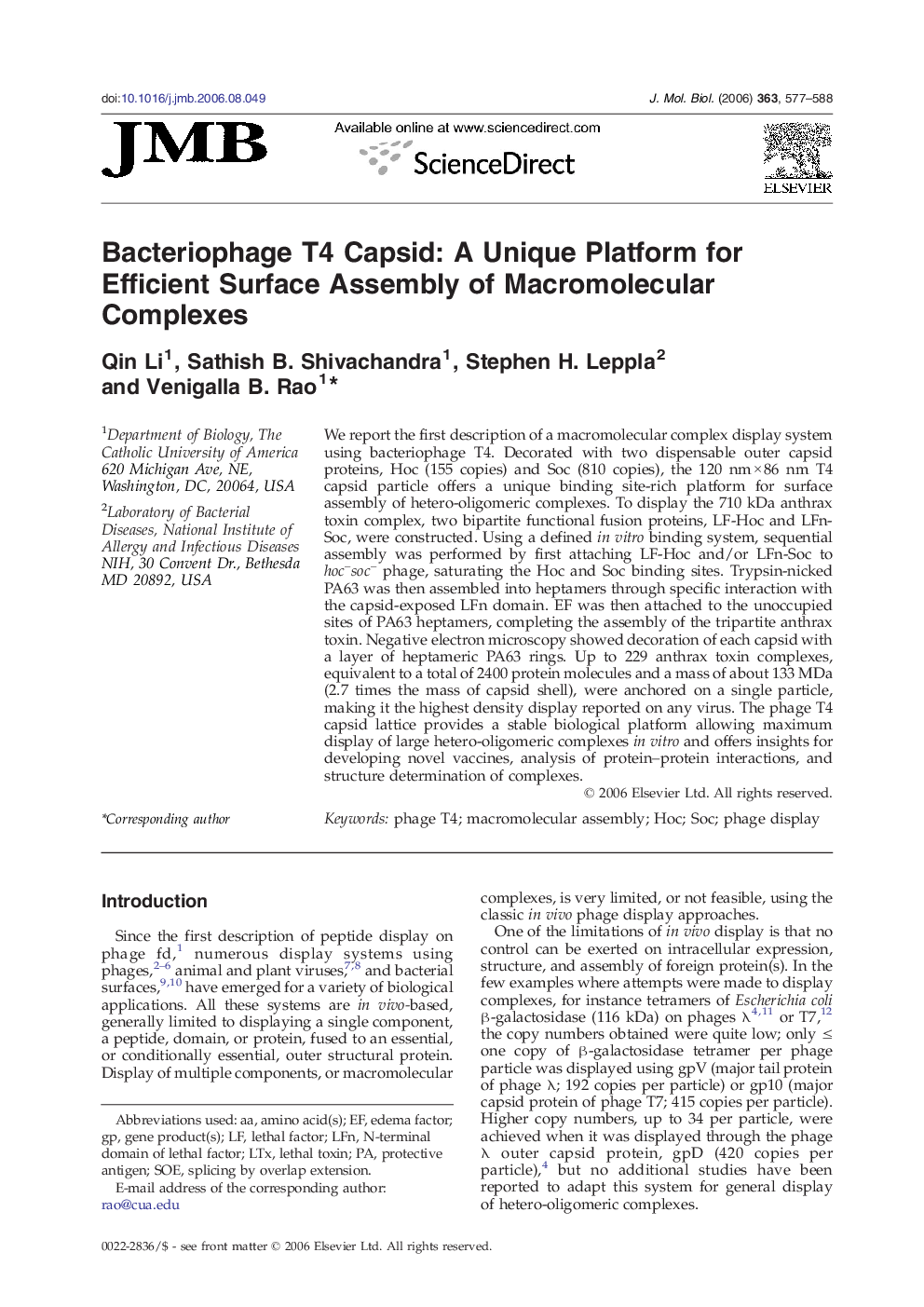| Article ID | Journal | Published Year | Pages | File Type |
|---|---|---|---|---|
| 2188903 | Journal of Molecular Biology | 2006 | 12 Pages |
We report the first description of a macromolecular complex display system using bacteriophage T4. Decorated with two dispensable outer capsid proteins, Hoc (155 copies) and Soc (810 copies), the 120 nm × 86 nm T4 capsid particle offers a unique binding site-rich platform for surface assembly of hetero-oligomeric complexes. To display the 710 kDa anthrax toxin complex, two bipartite functional fusion proteins, LF-Hoc and LFn-Soc, were constructed. Using a defined in vitro binding system, sequential assembly was performed by first attaching LF-Hoc and/or LFn-Soc to hoc–soc– phage, saturating the Hoc and Soc binding sites. Trypsin-nicked PA63 was then assembled into heptamers through specific interaction with the capsid-exposed LFn domain. EF was then attached to the unoccupied sites of PA63 heptamers, completing the assembly of the tripartite anthrax toxin. Negative electron microscopy showed decoration of each capsid with a layer of heptameric PA63 rings. Up to 229 anthrax toxin complexes, equivalent to a total of 2400 protein molecules and a mass of about 133 MDa (2.7 times the mass of capsid shell), were anchored on a single particle, making it the highest density display reported on any virus. The phage T4 capsid lattice provides a stable biological platform allowing maximum display of large hetero-oligomeric complexes in vitro and offers insights for developing novel vaccines, analysis of protein–protein interactions, and structure determination of complexes.
